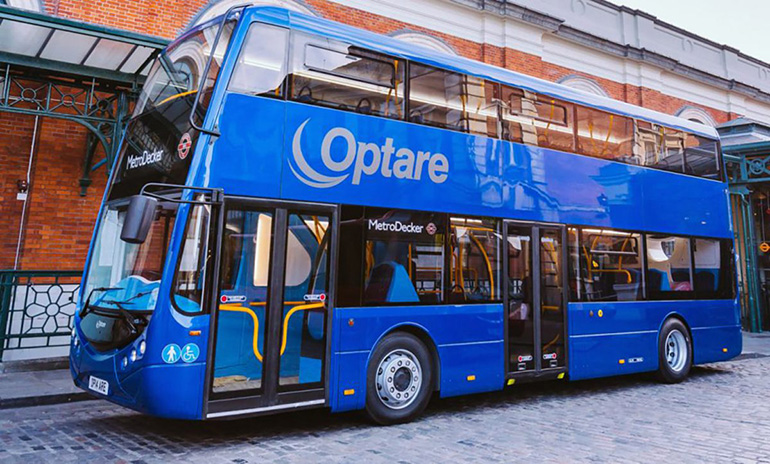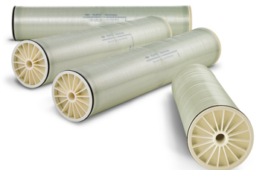Guest editorial from Permali, a material solutions company specializing in manufacture, design and qualification of composite and PU material solutions for the defense, aerospace, health, rail, automotive and many other engineering sectors that require compliance with complex regulatory frameworks.
 There is growing importance in the ways industries implement circular economy models at scale, not only to innovate, but to answer to regulations and wider anxieties about carbon footprints and irreversible environmental harm. With tight frameworks in place, governments such as the U.K.’s – and even foreign powers – can govern and regulate how industries are meeting the market with carbon goals. This sets levels and expectations centrally, but many industries are responding by advancing toward a truly circular economy.
There is growing importance in the ways industries implement circular economy models at scale, not only to innovate, but to answer to regulations and wider anxieties about carbon footprints and irreversible environmental harm. With tight frameworks in place, governments such as the U.K.’s – and even foreign powers – can govern and regulate how industries are meeting the market with carbon goals. This sets levels and expectations centrally, but many industries are responding by advancing toward a truly circular economy.
The value of sustainability extends beyond policies and perceptions and can help businesses gain competitive advantages. Traditionally, the economy functioned linearly and followed a system of creation and disposal. In the context of transport, this might describe an over-reliance on fossil fuels as a key source, or even single car ownership over sharing joint transport options. Addressing the pitfalls of outdated economic models, industries and governments are working in conjunction to showcase the power and efficiency of sustainability when it’s released as a model of production and consumption. The demand for sustainability is unevenly matched by different industries.
Producing and delivering circular economy models in automotive and transport design, for example, has great advantages. Given new emission objectives, reforming transport across the U.K. and enhancing its sustainability would be beneficial.
Emissions Standards
Initially an attempt to control and monitor exhaust emissions and improve air quality, the European Commission has been interested in observing these standards since 1992 with the advent of Euro 1. The release of Euro 6 describes the strictness of testing and degree of legislation to which a vehicle must conform. The Euro standards cover emissions of vehicles sold within the EU and EEA (European Economic Area) member states.
 Brexit appeared to have less impact in changing U.K. energy policy; but Britain’s Climate Change Act imposes tougher restrictions to limit carbon emissions. With an end goal for 2050, the new standards set at a reduction rate of 80% set against its previous levels in 1990. This is encouraged by the Committee on Climates Control through “carbon budgets” (which manages an allowance of greenhouse gasses over time).
Brexit appeared to have less impact in changing U.K. energy policy; but Britain’s Climate Change Act imposes tougher restrictions to limit carbon emissions. With an end goal for 2050, the new standards set at a reduction rate of 80% set against its previous levels in 1990. This is encouraged by the Committee on Climates Control through “carbon budgets” (which manages an allowance of greenhouse gasses over time).
Benchmarked with the EU, the U.K. is encouraged to meet more challenging emission reductions in a shorter period.
“The proposed U.K. carbon budget covering the same period (2028-2032) is tighter than our estimate of the U.K. share of the EU 2030 target,” said the Committee responsible for managing the Climate Change Act.
As the landscape of environmental regulations is constantly changing, the future of U.K. emission policies remains unpredictable. But the Euro emission standards has helped the U.K. gain momentum in the area of air quality.
In the U.S., federal emissions regulate engines and vehicles, establishing a standard for greenhouse gas emissions (GHG), which is delivered by the US Environmental Protection Agency (EPA). Based on the Clean Air Act (which was amended in 1990), there is a target for greater air quality.
The circular economy, explained
Moving away from traditional models, the circular economy can reform how products are created and used or consumed. Essentially, the circular economy supports production cycles that reduce waste and improve reusability and recyclability (and even repairability).
Circular economy initiatives have a successful history with reforming transportation projects, including schemes undertaken by globally recognized brands like Rolls Royce (“TotalCare Program”) or DHL’s pledges to reduce carbon emissions.
Goals are almost always shared in circular economy initiatives, whereby closing the loop on material production, while promoting efficiency and robustness of a supply chain. On closer inspection, these initiatives capture a desire for more sustainable practice, but also a sense of innovation in product design, performance and longevity.
Rolls Royce’s predictive maintenance on aerospace engines, under the TotalCare Program, describes a drive for sustainability, but also an interest to focus on product robustness and quality in the long term. As successful programs exemplify the benefits of a circular economy, and with a greater focus on the role of material quality and robustness, there’s evidence that it could reform public transport as it has innovated private car manufacturing and sells.
Thermoplastic Polyurethane (TPUs)
Thermoplastic Polyurethane’s contribute to the circular economy across a variety of applications through its ability to be 100% recycled. TPUs are extremely tear and puncture resistant, ensuring materials last for long periods of time, even through high stress situations. This innovative material is still relatively unknown to the wider public and has only really been examined predominantly in consumer products such as sneakers, while applications for more critical items such as medical devices and transport are less well-known.
Materials like TPU can be the workhorse for circular economy initiatives, especially for the likes of product engineers who face pressure to satisfy end of life recyclability targets. These TPU films can include 30% – 70% renewable-sourced material, helping limit the use and reliance of natural resources. With these goals in mind, and a range of applications available, TPU films can drive sustainability and waste reduction simultaneously.
Material science allows engineers to think creatively about designing products for wider public and private use. The circular economy can be approached across the life cycle of a product; this means greater renewability of content in the product at the start of product life, and greater recyclability and reusability opportunities at the end of product life.
In the materials industry and beyond, the topic of sustainability and renewability has resulted from an appetite to innovate products that quickly become wasteful. This is where TPUs have become increasingly popular in the conversation around recyclability targets. Thermoplastics can be melted, rescued from waste, and repurposed between different products and their life cycles, enhancing recyclability.
Biodegradability
Renewable content can help drive recyclability as an end-goal, finding opportunities to reuse materials or products near end-of-life. Traditional materials like PVC may start to feel lacking in the near future, where a biodegradable TPU can help product engineers near environmental goals like wider carbon reductions.
Transport and the Circular Economy
When applied to transport vehicles and wider afield, TPUs can be consulted in the design of products to reduce weight, improve fuel consumption, and decrease emissions. Leading material innovator, Permali manufactures and supplies Tuftane TPU film grades that are 100% recyclable amongst other advanced composite solutions for automotive.
Applied to the demanding environments of motorsport, where materials perform a safety critical function, composites are used to enhance many aspects of a vehicle. Regarding wider automotive design, ongoing environmental emission targets and tightening legislation have put new pressures on material engineers to innovate vehicle designs for greater performance.
 Since the 20th century, which was characterized by advances in mass global transport, these new and far-reaching models of public mobility have made travel easier and more accessible. Yet, public transport can also be costly to operate, especially in the resources that are exhausted, and these can be environmentally damaging. Reducing the environmental impact and burden of mass transport has generated an interest in material design and innovation. This means planning impacts where urban waste and pollution are concerned. Engineering products for renewability means that they maintain value over time or until end-of-life when they can be regenerated.
Since the 20th century, which was characterized by advances in mass global transport, these new and far-reaching models of public mobility have made travel easier and more accessible. Yet, public transport can also be costly to operate, especially in the resources that are exhausted, and these can be environmentally damaging. Reducing the environmental impact and burden of mass transport has generated an interest in material design and innovation. This means planning impacts where urban waste and pollution are concerned. Engineering products for renewability means that they maintain value over time or until end-of-life when they can be regenerated.
Projects like a hydrogen bus collaboration, for example, represent ways that material science such as composite solutions can innovate vehicle design. The technology like this is potentially transferable to heavy duty goods vehicles, including trains or planes. Benefiting from lightweight composites, vehicles like a hydrogen bus are an efficient, zero-emission alternative to diesel.
Within the scope of a circular economy model, public transport can reform away from harmful practices, such as steadily creeping emission rates. Importantly, public transport can be encouraged to maximize the existing infrastructure and vehicle usage, while helping to limit operational costs.
Adopting the circular economy for transportation means seeing a fuller scope of meaningful change on the horizon; whether that’s reducing end-of-life waste, or embracing materials in the planning and design of new, innovative solutions. The circular economy represents a spectrum of opportunity to upgrade how we think about and practice more environmentally sustainable habits, starting with product design.





Tell Us What You Think!